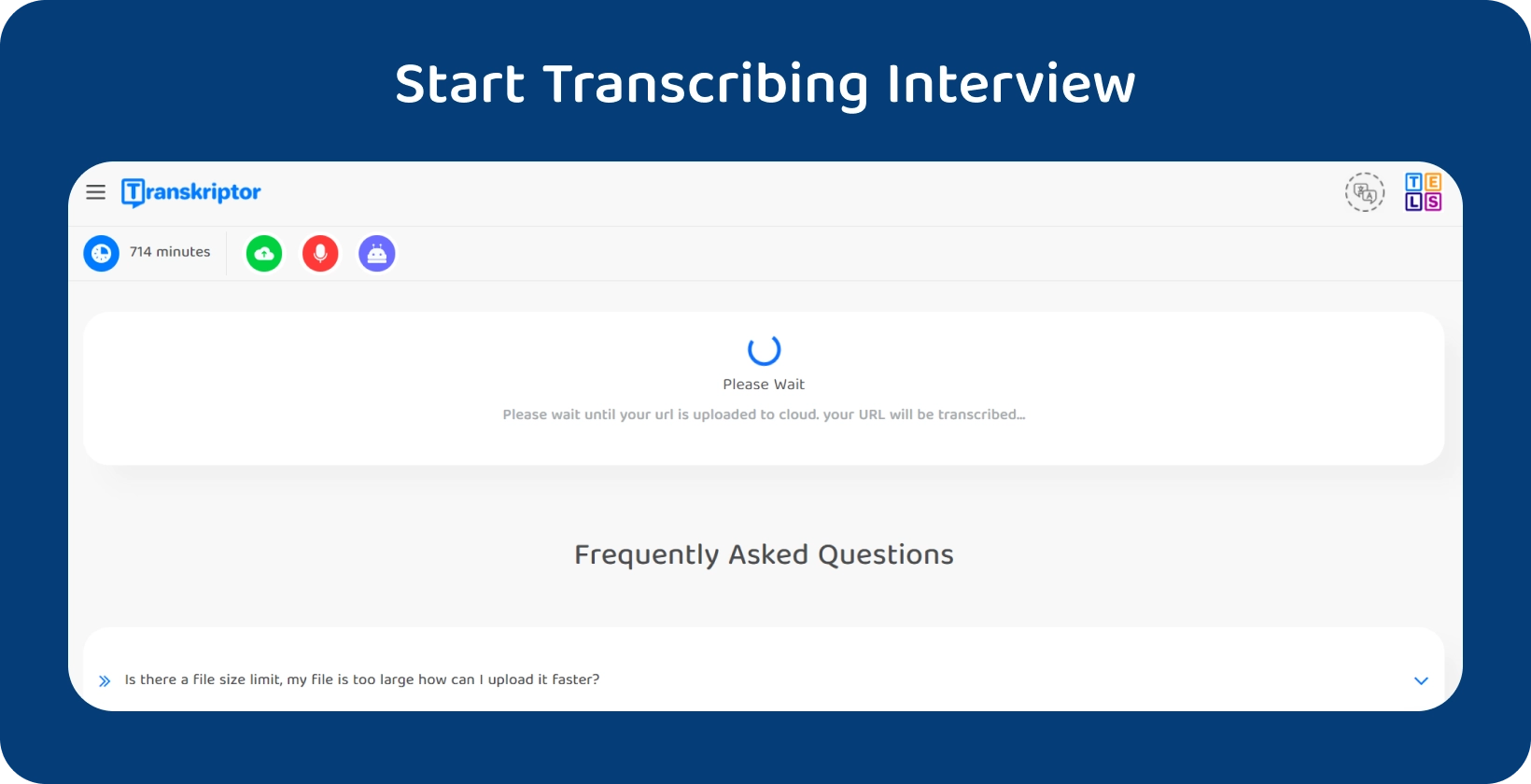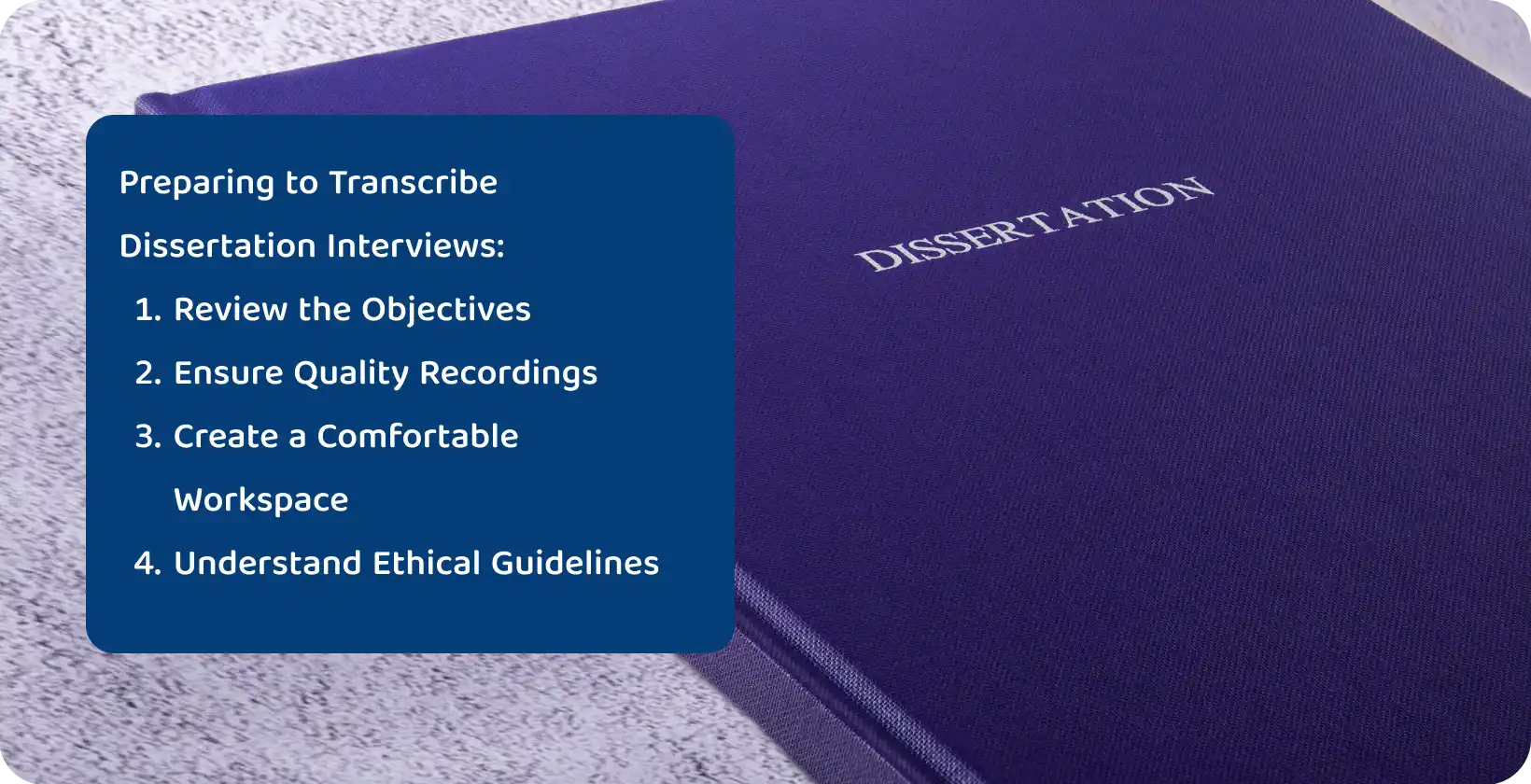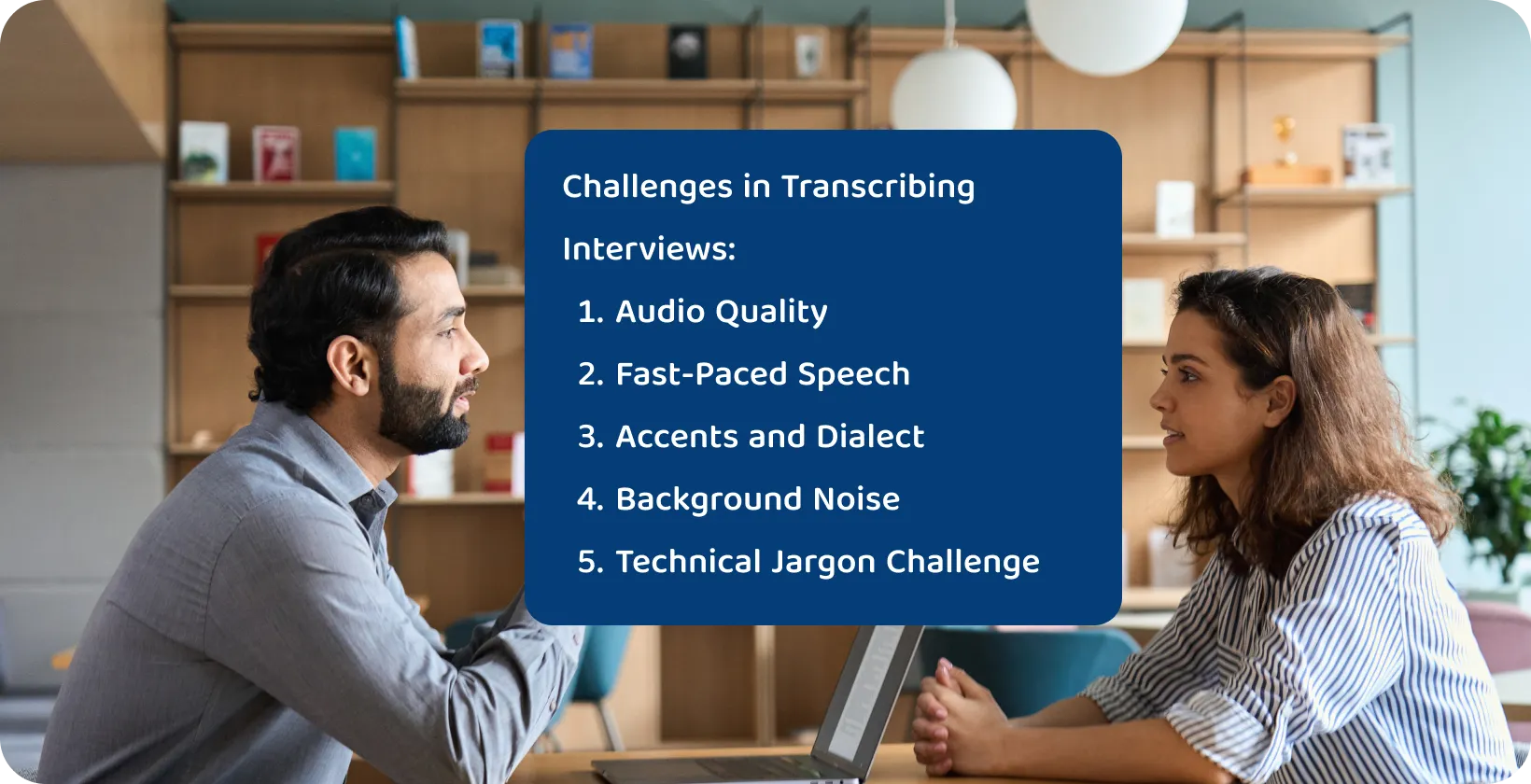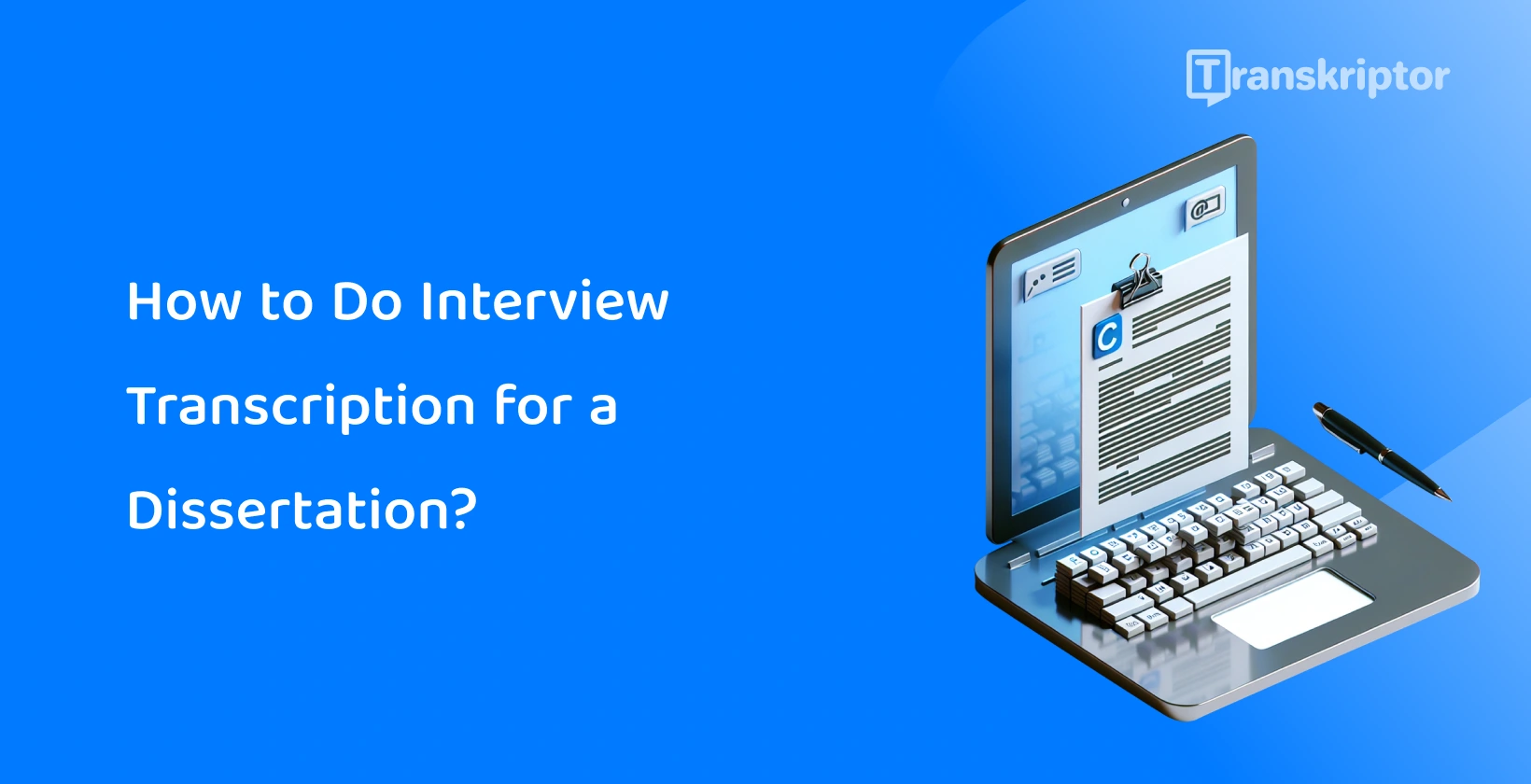Accurate transcription is vital in the dissertation process, turning spoken words from interviews into a written format that forms the backbone of qualitative research. It allows researchers to engage deeply with their data, marking significant sections and swiftly navigating through insights, thereby reinforcing the foundational evidence required for a compelling dissertation.
Meet Transkriptor , a leading speech-to-text tool designed to elevate the transcription process for researchers. This tool stands out for its ability to deliver precise, efficient transcriptions, making it an indispensable asset for dissertation work. By leveraging Transkriptor, researchers can ensure that their transcription process is not only faster but also more accurate.
The 6 steps to do interview transcription for a dissertation are listed below.
- Sign Up/Log in to Transkriptor: Create a new account or access an existing one.
- Upload/Record the Interview: Either upload audio/video files from your device or directly record the interview within Transkriptor for transcription.
- Start Transcribing Interview: Choose the language of the recording and let Transkriptor's AI technology accurately transcribe the speech to text.
- Review and Edit: Review and make adjustments to the transcription, ensuring it accurately reflects the interview content.
- Download or Share: After finalizing the transcript, download it in formats like TXT, SRT, or Word, or share it directly from the platform.
- Use the Transcriptions for Analysis: Utilize the accurate and detailed transcripts for in-depth analysis, identifying patterns, themes, and insights in your research.
Step 1: Sign Up/Log In to Transkriptor
The first step for researchers is to either sign up for a new account or log into an existing one on Transkriptor. This platform caters specifically to the needs of academic transcription, providing a streamlined interface for ease of use. Researchers can create an account using their Google accounts or an email address.
Upon completing this initial step, access to Transkriptor's dashboard is granted, allowing for immediate start on transcription tasks. This simple and straightforward process ensures that researchers can quickly begin their work, leveraging the platform's capabilities to facilitate their dissertation transcription needs.
Step 2: Upload/Record the Interview
After logging in, researchers have the capability to upload or record their audio or video files to Transkriptor. Simply click on the “Record” button to start recording. The platform supports a wide range of file formats, including but not limited to MP3, MP4, WAV, and MOV, accommodating virtually any type of audio or video recording used in academic research. Uploading is made flexible through options to drag and drop files directly into the platform or import them from popular cloud storage services like Google Drive or OneDrive. This feature ensures a seamless and secure upload process, allowing researchers to quickly proceed with their transcription tasks without worrying about compatibility or access issues.
Also, consider using Meetingtor . It attends and records the meetings in your calendar and stores them. With one click on the platform, users can get transcriptions via Transkriptor.

Step 3: Start Transcribing Interview
After uploading, researchers start the transcription process on Transkriptor by selecting the recording's language with one click. The platform's AI technology then accurately transcribes speech to text, supporting a broad range of languages to meet diverse research requirements. This ensures precise capture of spoken words, essential for qualitative analysis.
Step 4: Review and Edit
Transkriptor offers an editing feature that allows researchers to review and tweak the transcript while it's being created. This means immediate corrections can be made, helping to make sure the transcript matches the original recording closely. Being able to edit on the go is crucial for catching important details and ensuring the transcript accurately reflects the interview.
This process not only makes work easier but also improves the quality of the final transcript, which is important for research that relies on detailed and accurate data. Through Transkriptor, researchers can be confident that their transcripts are both precise and true to their source material.
Step 5: Download or Share
After editing their transcript, researchers can add details like speaker names and timestamps for clarity. Transkriptor allows downloading in various formats such as TXT, SRT, or Word , suiting different needs. For sharing, the platform enables direct distribution, making it simple to collaborate with others or submit work. This feature ensures transcripts are easily accessible and ready for any next steps in the research process.
Step 6: Use the Transcription for Analysis
Researchers proceed to analysis by coding and organizing data based on the dissertation's methodological framework after completing transcription. This involves identifying patterns and themes and providing meaningful insights from the interview content.
Moreover, researchers can leverage Transkriptor's AI chat feature for additional support during their analysis. This innovative tool assists in interpreting and organizing transcribed data. By integrating AI chat assistance with traditional analysis methods, researchers can navigate the coding process with greater accuracy and generate robust, meaningful outcomes in their research endeavors, making Transkriptor an invaluable ally in qualitative research.
Why is Transcription Crucial for Dissertation Interviews?
Transcription plays a crucial role in dissertation interviews. It accurately captures and preserves spoken words, ensuring data integrity and reliability. Researchers prefer working with transcripts for analysis despite the accessibility of audio and video recordings. This preference arises from easily handling tangible transcripts, facilitating quick access and annotation.
Digital recorders and cameras make recording easy, but transcripts remain more manageable for detailed analyses. Researchers find it advantageous to shuffle pages and mark transcripts with a pencil. The familiarity and convenience of working with paper transcripts persist, even with the availability of qualitative data analysis software. Traditional transcription methods remain the norm for interviews and recordings involving people.

How to Prepare Before Transcribing Dissertation Interviews?
Researchers prepare before transcribing dissertation interviews by considering essential factors. This phase involves organizing recordings, investing in quality equipment, and setting up an efficient workspace.
The steps to prepare before transcribing dissertation interviews are listed below.
- Review Interview Objectives: Gain a clear understanding of the research aims and contextual details.
- Ensure Good Quality Recordings: Focus on acquiring clear and crisp audio, minimizing background noise, and addressing technical glitches.
- Create a Comfortable Workspace: Establish an environment that promotes focus, concentration, and optimal listening.
- Understand Ethical Guidelines: Be aware of confidentiality requirements and relevant data protection rules.
Review Interview Objectives
Researchers initiate transcription by thoroughly reviewing the interview objectives. This involves gaining a clear understanding of the research aims and contextual details. Aligning transcription efforts with these goals ensures purposeful and insightful outcomes. Researchers must delve into key themes, critical topics, and specific study objectives for a detailed transcription decision-making process, fostering a deeper analysis.
Ensure Good Quality Recordings
Prioritizing high-quality audio recordings is essential for effective transcription. Researchers focus on acquiring clear and crisp audio, minimizing background noise, and addressing technical glitches. Checking for audio clarity involves evaluating factors like background noise and potential distortions. Starting with a high-quality recording establishes a reliable foundation for accurate transcription, ensuring an authentic representation of the interview content.
Create a Comfortable Workspace
Crafting a dedicated and comfortable workspace is crucial for the transcription process. Researchers establish an environment that promotes focus, concentration, and optimal listening. A well-designed workspace minimizes distractions, enhancing the ability to immerse in interview content. Consider lighting, seating arrangements, and equipment placement to optimize the workspace for transcription demands.
Understand Ethical Guidelines
Researchers engaging in transcription activities must possess a profound understanding of ethical guidelines. This involves being aware of confidentiality requirements and relevant data protection rules. Upholding ethical standards ensures the responsible treatment of interview participants and their sensitive information.
The commitment to ethical transcription practices includes obtaining informed consent, preserving anonymity, and safeguarding data confidentiality, contributing to the overall integrity of the research process.

What are the Challenges in Transcribing Interviews?
Researchers face critical challenges when preparing for the transcription process. Various hurdles impact accuracy and efficiency, requiring a keen understanding of effective mitigation strategies.
The challenges in transcribing interviews are listed below.
- Poor Audio Quality: Prioritize addressing poor audio quality for accurate transcription.
- Fast-Paced Speech Challenge: Fast-paced speech is difficult to follow and transcribe. Use transcription software or slow down the playback.
- Accents and Dialect Challenge: Navigating the variability introduced by accents and dialects in spoken language requires researchers to adopt specific approaches.
- Background Noise Challenge: Background noise hinders the transcription process, emphasizing the need to create an optimal recording environment.
- Technical Jargon Challenge: Researching technical or unfamiliar terms is essential for grasping their meanings for an accurate transcription.
Poor Audio Quality
Researchers must prioritize addressing poor audio quality for accurate transcription. High-quality recording equipment is pivotal in this process. Investing in noise-canceling software further enhances the clarity of the recorded content, ensuring the faithful representation of spoken words and eliminating potential discrepancies introduced by subpar audio.
Fast-Paced Speech Challenge
Fast-paced speech in transcription demands specific strategies. Utilizing transcription software with adjustable playback speed proves valuable. Slowing down the playback without altering the pitch lets researchers meticulously capture each spoken word. This detailed approach significantly improves transcription accuracy, especially with rapid speech patterns.
Accents and Dialects Challenge
Navigating the variability introduced by accents and dialects in spoken language requires researchers to adopt specific approaches. Familiarize yourself with the specific linguistic characteristics to overcome challenges related to unfamiliar accents. Seeking assistance from individuals proficient in the accent or dialect provides valuable insights, ensuring accurate transcription that reflects the intended communication.
Background Noise Challenge
Background noise hinders the transcription process, emphasizing the need to create an optimal recording environment. Conducting interviews in quiet settings minimizes external disturbances. Additionally, transcription software with noise reduction features proves instrumental in mitigating unwanted sounds during transcription. This dual approach significantly contributes to the overall accuracy of the transcription.
Technical Jargon Challenge
Ensuring accurate transcription when dealing with technical jargon requires a proactive approach. Thoroughly researching unfamiliar terms is essential for grasping their meanings. Alternatively, consulting with the interviewee or subject matter experts provides valuable insights and clarification. This meticulous approach guarantees the transcription captures the intended meaning, even when confronted with specialized language or terminology. Researchers navigate the intricacies of technical content with precision and clarity.
To Overcome Interview Transcription Challenges: Transkriptor
Transcription challenges such as poor audio quality, fast-paced speech, accents, background noise, and technical jargon can significantly hinder the accuracy and efficiency of the transcription process. To overcome these challenges, Transkriptor stands out as a robust solution, employing advanced AI algorithms for precise and reliable transcriptions, minimizing errors.
Transkriptor not only ensures that the transcribed text represents the spoken words but also streamlines the entire process, making it a comprehensive solution for enhancing dissertation transcription accuracy. Try it for free!






 Middletown, Delaware, USA
Middletown, Delaware, USA